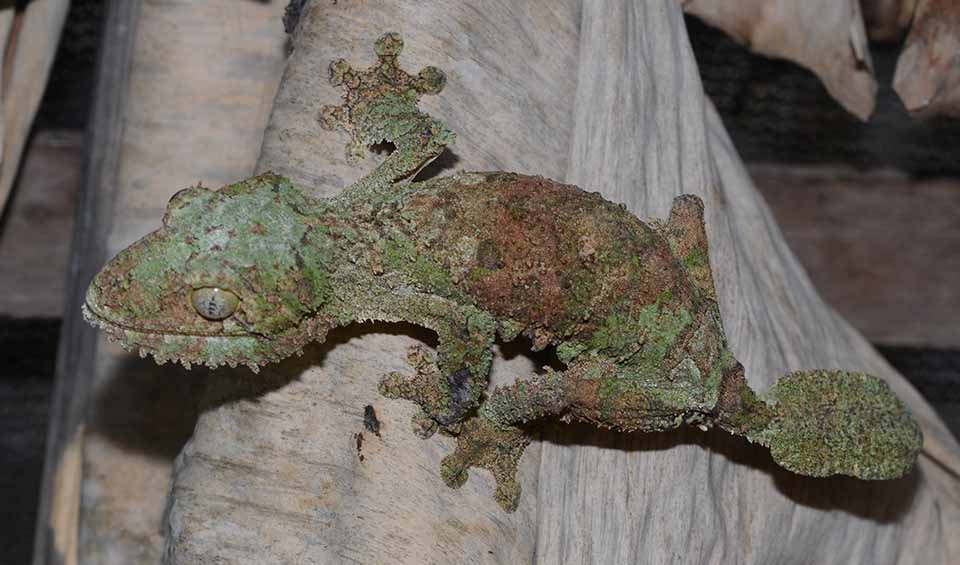One of Madagascar’s most remarkable masters of disguise. Endemic to the island’s eastern rainforests, this lizard is famous for its jaw-dropping ability to blend perfectly into its surroundings. The mossy leaf-tailed gecko can become practically invisible when clinging to a tree trunk. It’s one of the best examples of natural camouflage in the animal kingdom, and a living work of art shaped by evolution.
Its coloration and pattern vary depending on where it lives, but it’s usually mottled in shades of gray, green, brown, or beige, with markings that mimic moss, bark, or dead leaves. The edge of its body is jagged and blends seamlessly with tree bark, eliminating shadows and making it hard to spot even up close. Its tail resembles a dead leaf, complete with notches and a central “stem” line, helping it hide in plain sight.
The mossy leaf-tailed gecko is nocturnal, coming out at night to hunt insects and small invertebrates. It’s a sit-and-wait predator, staying motionless until a prey item comes close, then striking with surprising speed. During the day, it rests completely still on tree trunks, often with its body pressed flat and eyes half-closed. Even its eyes are adapted for camouflage—they’re large, patterned, and slit-like, helping it see in the dark and stay hidden during daylight.
This gecko, like others in the Uroplatus genus, has sticky toe pads that allow it to climb vertical surfaces and even cling upside down. Its skin is delicate and should never be handled by force, as it can easily tear. Like many geckos, it can also drop its tail if threatened—a defense mechanism known as autotomy. The tail will wiggle to distract a predator, giving the gecko time to escape, though it takes time and energy to regrow.
Distribution
 Madagascar
MadagascarAnything we've missed?
Help us improve this page by suggesting edits. Glory never dies!
Suggest an editGet to know me
Terrestrial / Aquatic
Altricial / Precocial
Polygamous / Monogamous
Dimorphic (size) / Monomorphic
Active: Diurnal / Nocturnal
Social behavior: Solitary / Pack / Herd
Diet: Carnivore / Herbivore / Omnivore / Piscivorous / Insectivore
Migratory: Yes / No
Domesticated: Yes / No
Dangerous: Yes / No




